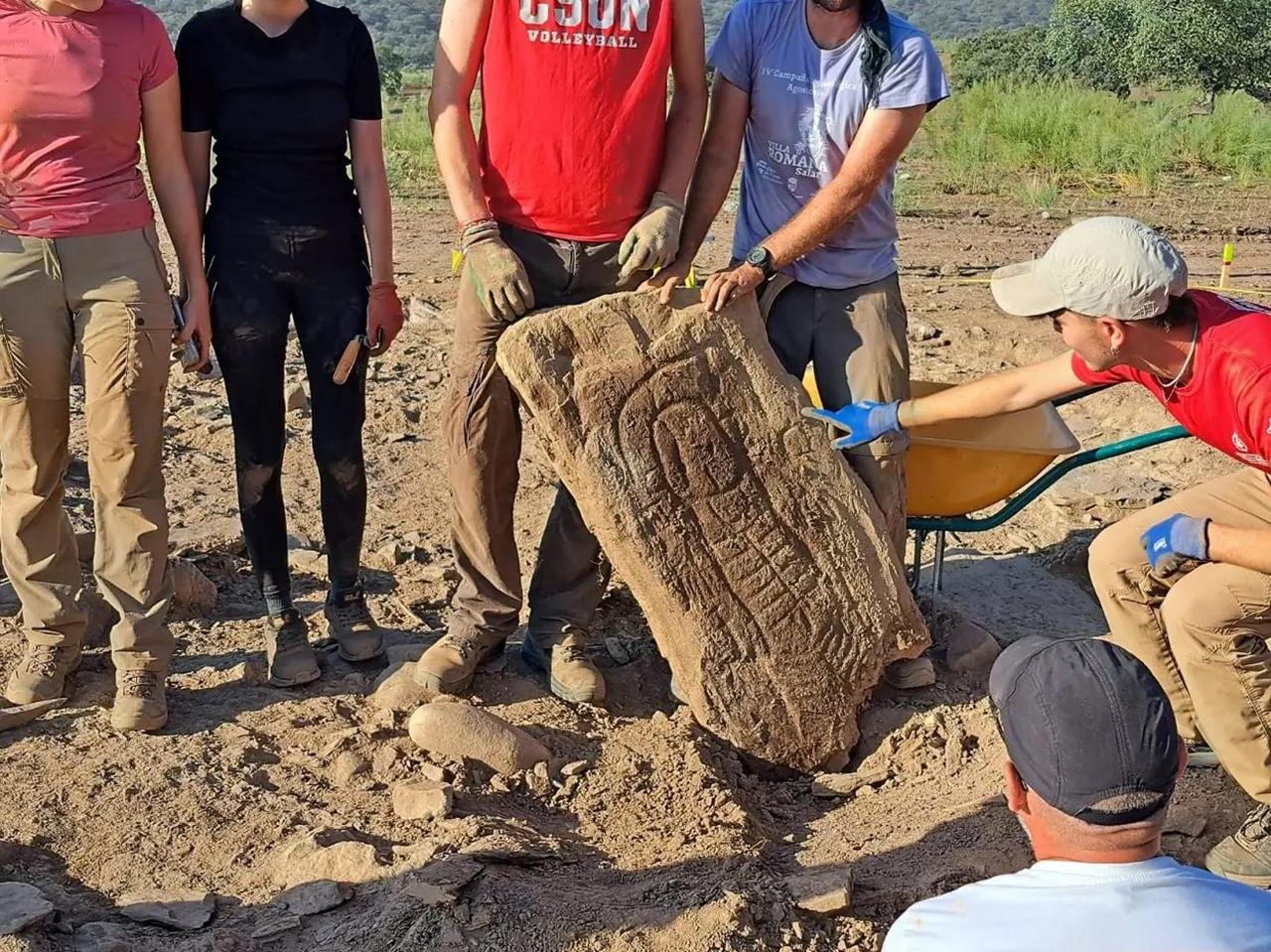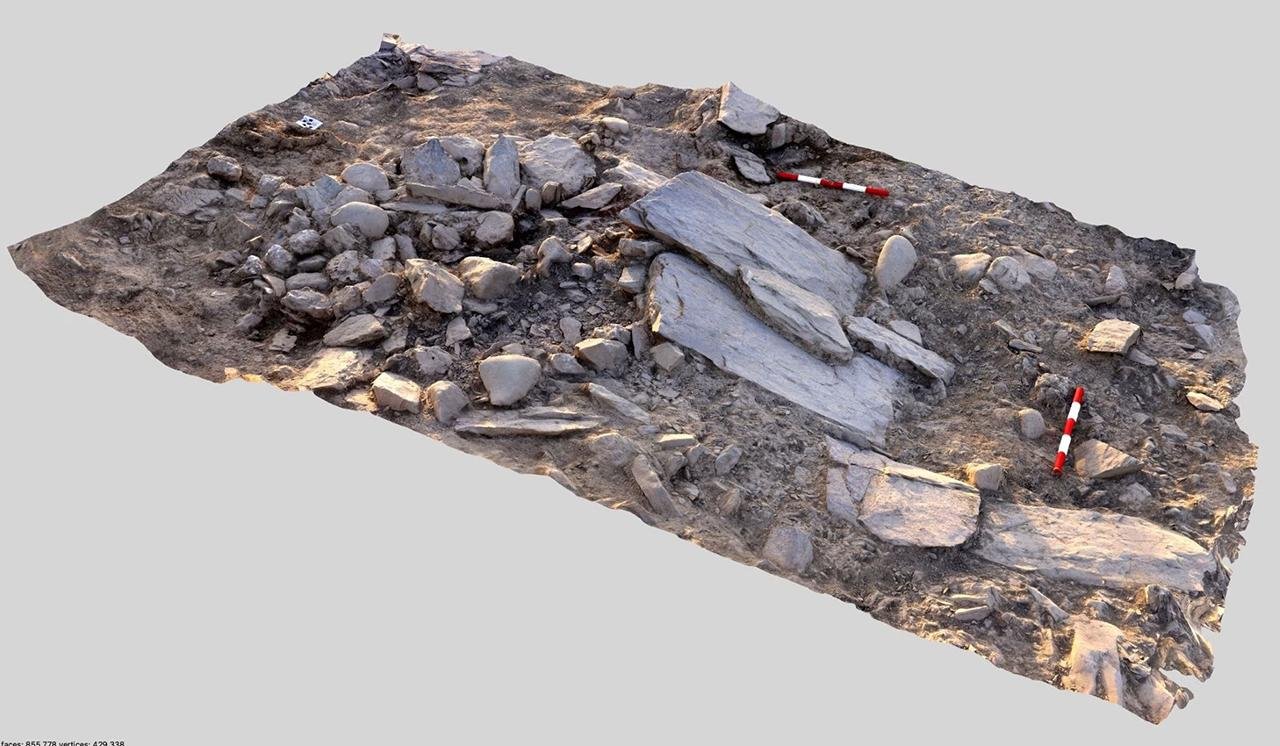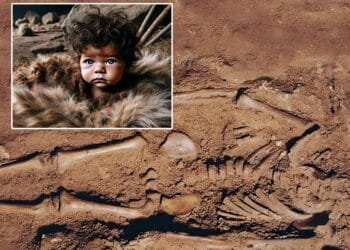A team of researchers from the University of Gothenburg, Durham University, the University of Seville, and the University of Southampton, working on the Maritime Encounters project, have unearthed a unique and decorated stela in the 3,000-year-old funerary complex of Las Capellanías, located in Cañaveral de León, Spain.

Stelae are carefully crafted vertical stone slabs adorned with inscriptions or images, and this newly discovered stela, the third of its kind found at the site, features a figure wearing a headdress, a necklace, and two swords. The representation is rich in detail, depicting male genitalia. The intricate combination of attributes challenges established interpretations of gender roles in prehistoric Iberian societies.
Traditionally, two primary types of figures were associated with Iberian stelae: “warrior” figures, typically interpreted as male due to the presence of weapons, and “headdress” figures, often considered female because of their headdresses and necklaces.
This binary perspective on gender roles in the Late Bronze Age and Early Iron Age has been shaken by the discovery. The male genitalia on the newly found stela, which combines attributes of both headdress and warrior types, indicates that these social roles were not confined to specific genders but could vary. This evidence suggests that the interpretation of gender roles was more fluid than previously believed.

Apart from challenging gender norms, this discovery is vital for several other reasons. The stela is found in context, lying on top of a circular cremation structure, which confirms that these stelae were used as funerary markers or tombstones.
Furthermore, the stelae served as territorial markers, demarcating significant natural pathways linking two primary river basins in the region. These pathways acted as vital communication routes during late prehistory, connecting the middle Guadiana and lower Guadalquivir basins, and the stelae possibly functioned as signposts for travelers passing through the area.
The discovery not only confirms the funerary use of stelae but also highlights the need to reevaluate earlier interpretations and theories regarding these monuments. The findings at Las Capellanías mark a significant milestone in understanding the cultural and historical context of these ancient stelae.





























